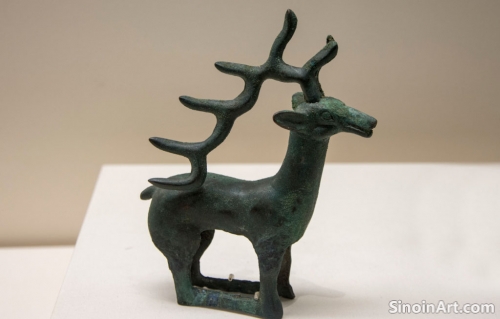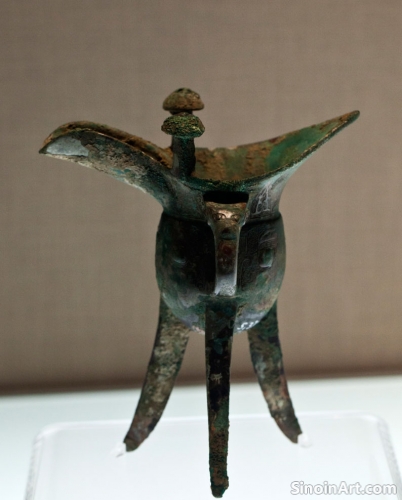Bronze Ware and the Development of Ancient Chinese Astronomy: Instruments, Charts, and Cosmological Beliefs
|
The intertwined development of ancient Chinese astronomy and the production of bronze ware is a fascinating study in how technological innovation and scientific understanding intersected with artistic expression and cosmological beliefs. Bronze was instrumental not only in creating tools for observation but also as a medium for representing the perceived structure and order of the universe. The use of bronze in the study of astronomy helped to further our understanding of the ancient Chinese perspective on the cosmos.  Bronze was used to create complex and precise astronomical instruments, such as armillary spheres, celestial globes, and sighting devices, which allowed ancient astronomers to map the heavens and to track the movements of celestial bodies with increasing accuracy. The creation of these complex instruments demonstrates the scientific knowledge and technical skills of the ancient world.  These instruments, often carefully designed to reflect both functionality and beauty, also embodied a deeper understanding of the relationship between the earthly and the heavenly realms, and also the role that humanity plays in this cosmic arrangement. The use of bronze as a medium helped to reflect and communicate complex cosmological ideas.  Bronze objects, such as vessels and mirrors, also often included depictions of constellations, the sun, the moon, and other celestial phenomena, highlighting the importance of the cosmos in ancient Chinese culture and thought. The incorporation of these symbols into bronze artifacts helped to emphasize the integration of the spiritual and the scientific. The study of bronze ware and its connection to ancient Chinese astronomy helps to understand the scientific advancements, the unique worldview, and the complex interplay between technology, religion, and the arts in ancient China. The fusion of these different perspectives is a key element in the ancient Chinese approach to understanding the world around them. |
Tag : bronze astronomy instruments, ancient Chinese cosmology, celestial maps, astronomical tools, ancient science
Related information
- Bronze Ware and Ancient Chinese Astronomy: Celestial Motifs and Interpretations
- The Use of Bronze in Ancient Chinese Transportation: Chariot Decoration and the Display of Power
- Bronze Weights and Measures in Ancient China: Standardization and Trade
- Analyzing the Surface Patina of Chinese Bronze Ware: A Story of Time and Environment
- Bronze Ware and the Transmission of Ancient Chinese Knowledge: Libraries, Archives, and Scholarship
This article explores the connection between bronze ware and ancient Chinese astronomy, highlighting the presence of celestial motifs, the creation of astronomical instruments in bronze, and how this interrelation reveals insights into ancient Chinese worldview and their understanding of the universe.
This article explores the use of bronze in ancient Chinese chariot decoration, highlighting its role in communicating power and status, the visual symbolism used, and how these decorative elements enhanced both the aesthetic appeal and also the political message of these important vehicles of transport.
This article explores the use of bronze for weights and measures in ancient China, highlighting the importance of standardization, fair trade practices, and the role these artifacts played in facilitating commerce across the empire.
This article explores the surface patina of Chinese bronze ware, discussing its formation, its value as a historical record, the factors that influence its appearance, and the techniques used to distinguish between natural and artificial patinas.
This article explores how bronze ware was used in the transmission of knowledge in ancient China, highlighting its role in creating records, tablets, archive labels, and other objects that helped to document, preserve, and disseminate information for future generations.